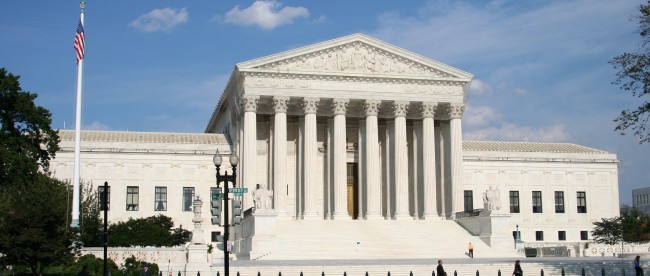What to Call Witnesses, According to the Supreme Court

The Supreme Court of the United States reconvenes after its summer recess on the first Monday in October. Over the months following, the Court hears many cases, some seen as more important than others. And over the course of the United States’ history, the Court has seen some very odd ones come through its halls.
For example, it once had to decide whether it was OK to call a witness by her first name.
In most situations, how court cases handle witnesses is pretty straightforward. One of the attorneys calls a witness to the stand; the witness, in turn, sworn in. The attorney then can ask the witness just about anything and the witness has to answer. There are some clear exceptions, of course; for example, pursuant to Fifth Amendment to the Constitution, you can decline to answer a question if your response could incriminate you. But by and large, if the witness refuses to answer and the other side’s lawyer doesn’t object to the question, the witness can be being held in contempt of court and risk jail time.
Being called “Mary” — if one’s name is Mary, at least — probably doesn’t rise to the level of one of those other exceptions. But that’s not how a woman named Mary Hamilton felt when she was called to the witness stand on June 25, 1963. Miss Hamilton, an African-American, was an officer in a civil rights group at the time. She and many others were arrested for protesting the discriminatory practices common in their area in Alabama, and Miss Hamilton was one of the witnesses called to dispute the appropriateness and legality of those arrests.
She didn’t end up saying much. According to WIkipedia, the county prosecutor insisted on calling her “Mary” while calling the white witnesses by their last names prefaced by Mr., Miss, or Mrs. as appropriate. (NPR reports that it was the judge who was asking the questions.) Calling black witnesses by their first names while not doing the same for whites was common in the area at the time, but that didn’t make the practice acceptable. Miss Hamilton refused to answer any questions addressed to “Mary,” finding the use discriminatory in this situation. The court found her refusal unacceptable, and held her in contempt. She was fined $50 — a tad under $400 in today’s dollars — and jailed for five days.
Miss Hamilton served her five days time but refused to pay the fine. Instead, she appealed to the Alabama Supreme Court, which was unsurprisingly not fond of her argument. They ruled against her, so she petitioned the Supreme Court of the United States to listen to her side of the story. They didn’t need to.
The Court, by a 6-3 vote, reversed the Alabama ruling without even so much as a hearing. In doing so, the Court cited to an earlier case where a Virginia man was wrongfully found in contempt for refusing to move from one side of the courtroom (reserved for whites) to the other (designated for African-Americans). In the Court’s eyes, insisting on referring to Miss Hamilton as “Mary” while not doing the same for other, white witnesses was analogous to physical segregation.
Bonus Fact: Typically, we don’t refer to doctors as Mrs., Miss, Ms., or Mr., at least not when addressing that person in a professional setting. Instead, we use Dr. — usually. The exception: surgeons in the United Kingdom. Historically, surgery was more akin to a trade than a learned profession, and surgeons there learned that trade via apprenticeships. As such, for centuries, surgeons never were called “doctors.” While surgeons began receiving academic training starting in the 1800s, the custom of surgeons not using the “Dr.” title persevered. Today, surgeons are doctors who have gone on for even more training, leading to a strange result. As the Royal College of Surgeons of England notes, “in effect a person starts as Mr/Miss/Ms/Mrs, becomes a Dr and then goes back to being a Mr/Miss/Ms/Mrs again!”
From the Archives: Two more things the Supreme Court decided: whether a tomato is a fruit or a vegetable and whether the X-Men are human.
Take the Quiz: Name the nine current members of the U.S. Supreme Court.
Related: An old (but not that old) portrait of the Supreme Court signed by five past and present Justices. Yours for the comically high price of $5,000.
